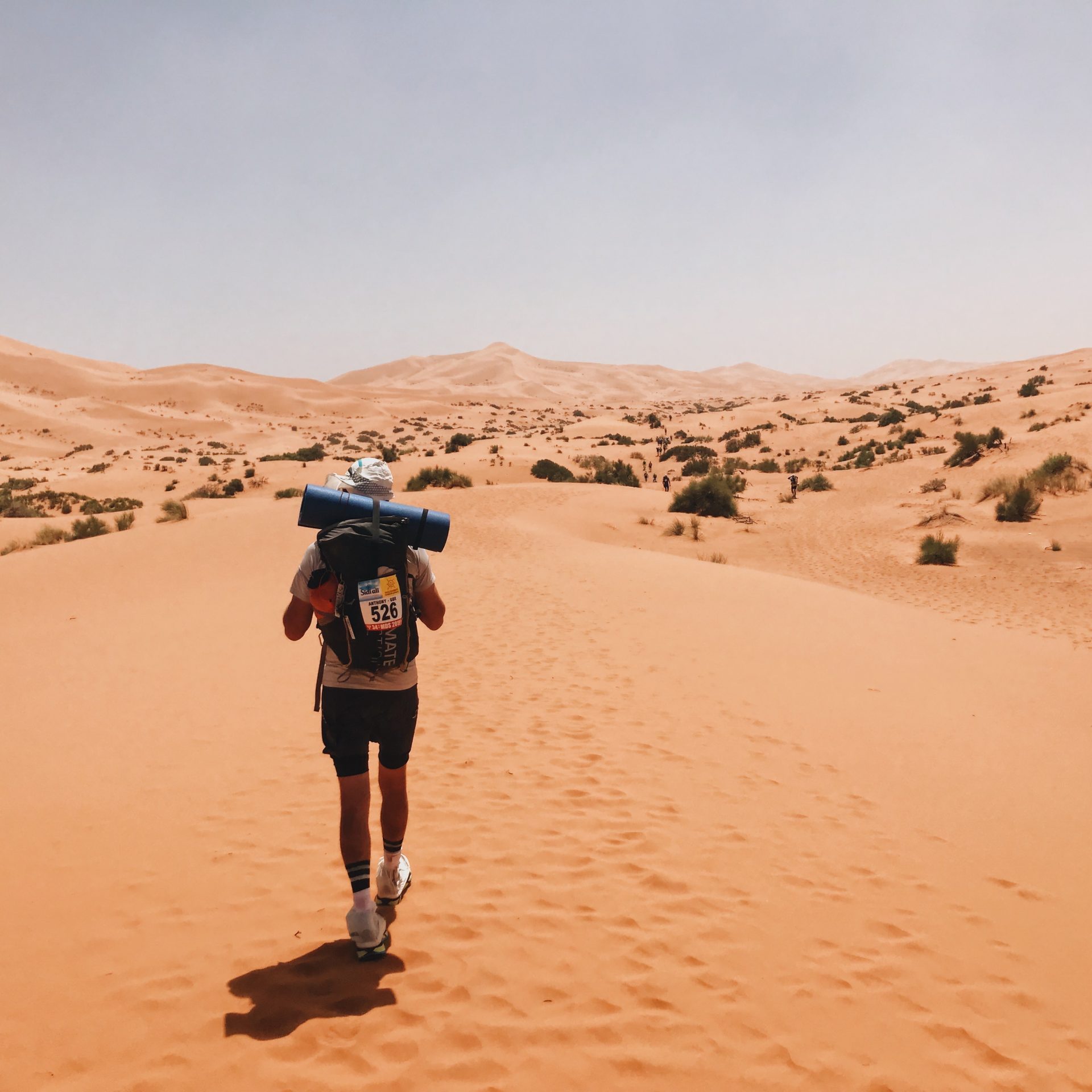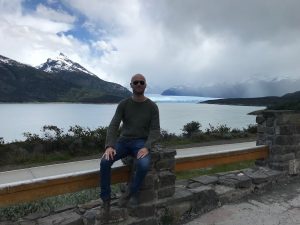Looking for what to do in Santa Marta, Colombia? Heard that it’s boring from someone who stopped by for a day?
Don’t worry.
You’re in good hands. I never planned to live there… but I ended up laying down roots in the city for around 6 months. So I’ve put together an exhaustive list for you wherever you’re passing by for a few days or choosing to live here yourself.
Perched on the far north coastline of Colombia, the port city of Santa Marta is one of the oldest surviving cities in all of South America and is considered a sister city of the more well-known and hip Colombian city, Cartagena.
I hope you enjoy this colossal list of what to do in Santa Marta, every item written from first-hand experience.
How To Get To Santa Marta
The quickest way to get to Santa Marta is to fly to its international airport, Simón Bolívar International Airport. Depending on where you’re coming from, you might need to hop on a connecting flight in the capital Bogotá before you arrive in Santa Marta.
If you are travelling around the country or living in the popular city of Medellin, there are usually two options for getting to Santa Marta. By far the quickest way is to take a domestic flight between the cities, which takes around an hour.
If you’re trying to keep your air miles down, you can always take the bus from Medellin to Santa Marta, although I wouldn’t recommend it. It tends to cost the same as a flight (~USD$40-$50) but takes far longer – around 15 hours.
Is Santa Marta Safe?
Modern Colombia has faced massive change and reform after its tumultuous past; coming out of paramilitary violence and being a victim of cartel drug-trafficking violence. An easing of society and an influx of tourism has relatively increased safety in the country.
All this being said Colombia as a whole isn’t somewhere you take your safety for granted; petty crime can still be an issue.
Many hotels and accommodation will have their own security and this will help you feel at ease. Generally speaking, as long as you keep your wits about you (especially at night time), there’s no reason why you shouldn’t feel safe in Santa Marta.
You’ll probably also want to avoid some of the poorer barrios, as these are generally home to some of the more violent gangs, and some taxis will even refuse to take you there. These include Pastrana, Tayrona, Corea, and Cerro de las Tres Cruces.
I survived an attempted mugging by two young, not so gentlemen who were high as a kite, just outside the city centre. It was 8 pm and I had my laptop bag on my back, after living in Mexico City for a good few years I wouldn’t usually do this and it was an exception to the rule as opposed to the rule.
I also run pretty fast thanks to my upbringing in council estate England.
Related post: Travel Safety Tips For Men and Women
Things To Do in Santa Marta, Colombia
There are more than enough fun things to do in Santa Marta with the option of hikes, soaking up the sun with a view, adventure travel and day trips just outside of town for when you’ve exhausted all avenues.
Here is the ultimate list of things to do in Santa Marta, Colombia (from a former expat).
1. Visit Taganga Town
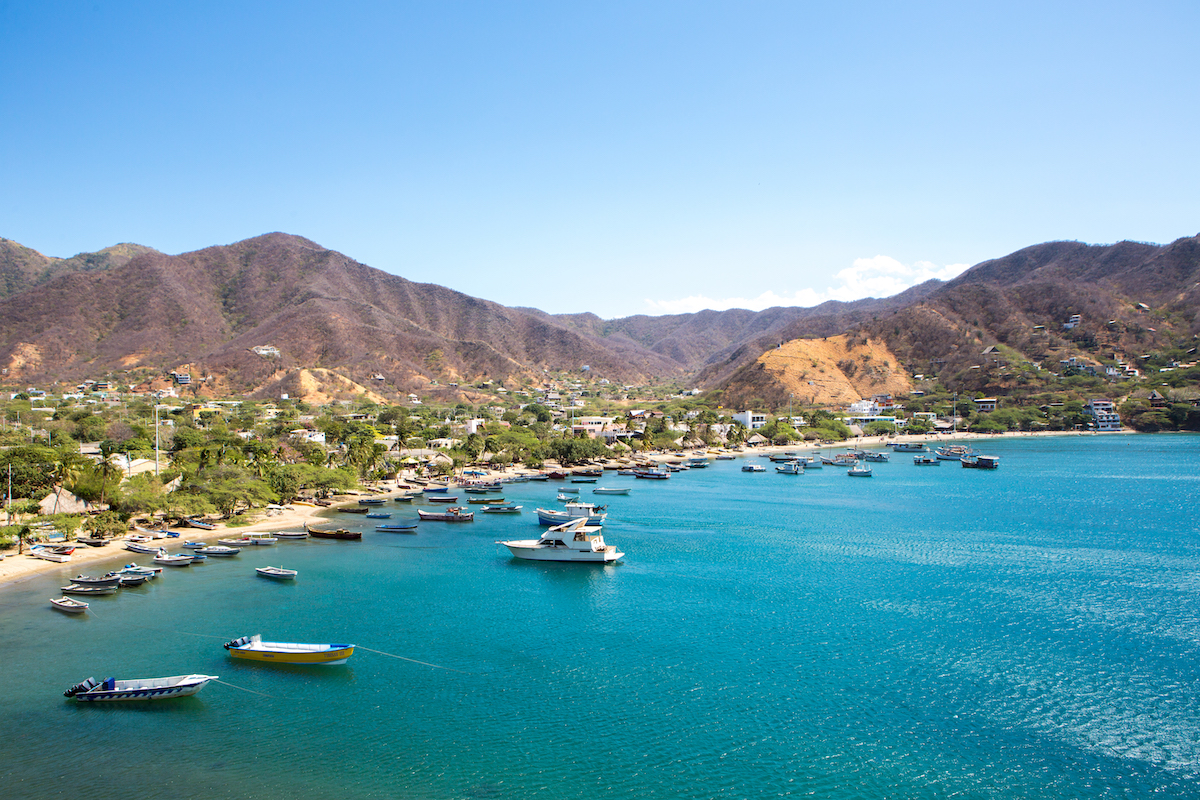
Just north of Santa Marta city is the time-honoured town of Taganga. Once a traditional quaint fishing town, Taganga Town has grown into a hotspot for backpackers and travelling Colombians in modern times but still retains its laid-back feel.
The streets of Taganga are adorned with numerous murals and unpaved streets, providing a colourful and rich landscape to explore.
During the evening, Taganga Town becomes a mecca for sunset seekers, with the coastline offering a perfect vantage point for watching the sun go down.
The shores just off Taganga Town also provide prime conditions for scuba diving. It’s both one of the best and cheapest places to dive on the globe, whether you’re an experienced diver or looking for your first dip into the world of oxygen tanks.
With clear waters and a mystery of marine life, you can explore this underwater world only a short distance from the Taganga shoreline and don’t forget Taganga Viewpoint – the ideal spot for a panoramic view of the region.
Know before you go:
- Location – Taganga sits just three miles north of Santa Marta.
- Cost – COP$1,800 for the bus fare each way.
- Opening hours – N/A
- Time needed – Give yourself a day to truly enjoy this seaside town.
- Getting there – A number of buses leave regularly from Santa Marta including the Blue City Bus which you can catch from the market, or jump in a minibus (look for signs in the window that say Tatanga) from the main bus terminal. Both options will set you back COP$1,800 each way.
2. Ruta de los Murales (Self-Guided Street Art Tour)
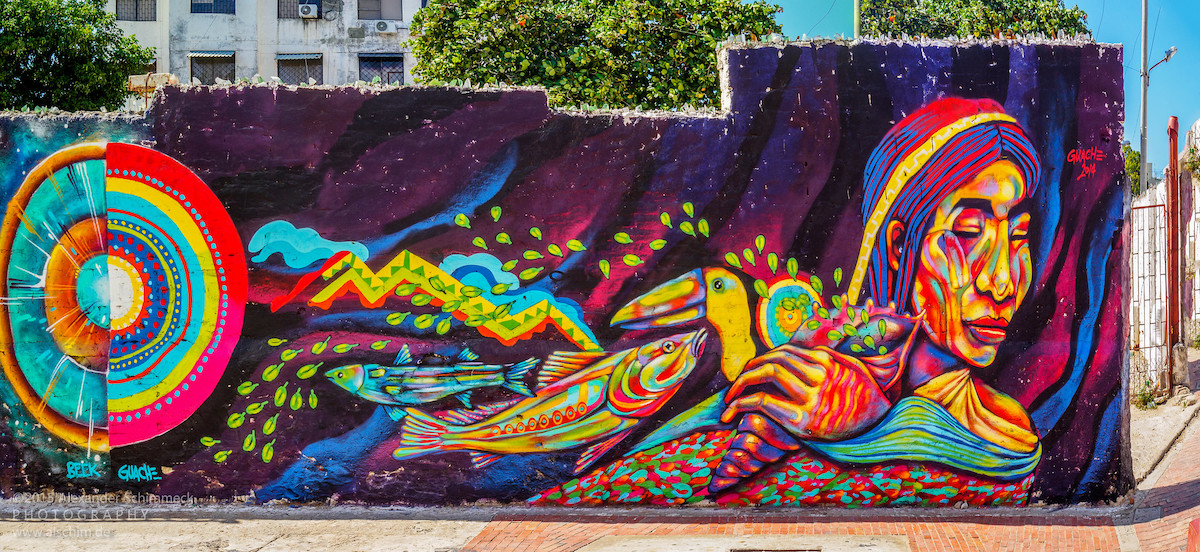
Similar to other Colombian towns and cities, Santa Marta is adorned with street after street of stimulating and provocative graffiti. Forget your opportunistic graffiti tagger, these are stunning works of art all in their own right.
Combining sombre murals and absurd psychedelic art, the patchwork of line and colour brings the neighbourhoods to life. Even better, it’s easy to carry out a self-guided tour of these artworks, all by yourself.
The Ruta de los Murales, or graffiti route, runs through, what would be, quite drab and forlorn buildings that are now bursting with colour.
Many of the murals are by Colombian artist Michelle Gouache, who weaves the faces and icons of indigenous South American culture into his art. Keep an eye out for the stunning murals of Muisca leaders adorned with gold and pre-colonial majesty.
Although many of the murals can be found along with this famous Mural Route there are seemingly endless pieces of art all over the city, which you’ll notice as you wander around.
Know before you go:
- Location – Santa Marta city centre
- Cost – Between USD$20-25 per person if you join an organised tour. Free if not!
- Opening hours – 9 am to 5 pm
- Time needed – Most tours last around three hours.
- Getting there – Most tours include hotel pick up and drop off so you shouldn’t need to worry about getting there. If you’re doing it yourself, you should be able to walk to the start of the route from most central hotels.
3. Visit Simon Bolivar’s Deathbed at Quinta de San Pedro Alejandrino
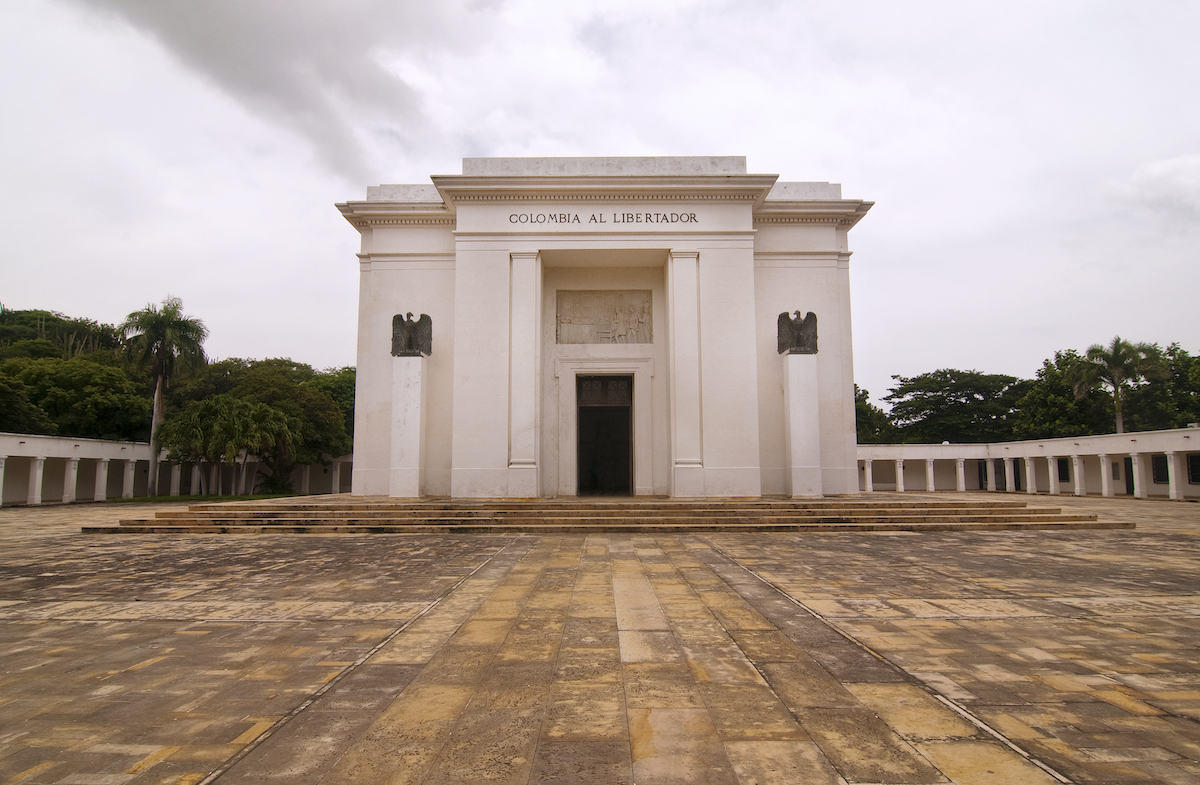
If one name is held above all others across the continent of South America, it is Simon Bolivar. Credited as being the driving force behind the independence movements of many modern South American nations (so much so that the country of Bolivia bears his name) Simon Bolivar is the hero of many.
Born in Venezuela and the leader of the nation of Peru, although he is buried in Caracas, his final moments and death actually happened in the city of Santa Marta.
Today, you can visit Quinta de San Pedro Alejandrino, the Hacienda home where Simon Bolivar took his last breath, after a life of being one of the greatest liberators known to man.
The home is adorned with many features, including the stunning Altar de la Patria, an altar to the fatherland, and a white marble structure depicting the leader and revolutionary.
There’s also a small museum where you can learn about Bolivar’s life and legacy. The grounds of the Hacienda are also worth an exploration, home to an exquisite botanical garden and rows of stunning trees.
Know before you go:
- Location – Quinta de San Pedro Alejandrino is located in the Santa Marta suburb of Mamatoco, two and a half miles from the city centre.
- Cost – 21,000 COP entry fee.
- Opening hours – 9 am – 4:30 pm.
- Time needed – Two hours will be enough.
- Getting there – The easiest way to get there is via a private taxi. If you’re on a budget, make your way to the bus terminal and jump on a bus heading to Mamatoco and let the bus driver know where you’d like to get off.
4. Pay Homage To a Statue of 90’s Football Icon Carlos “El Pibe” Valderrama
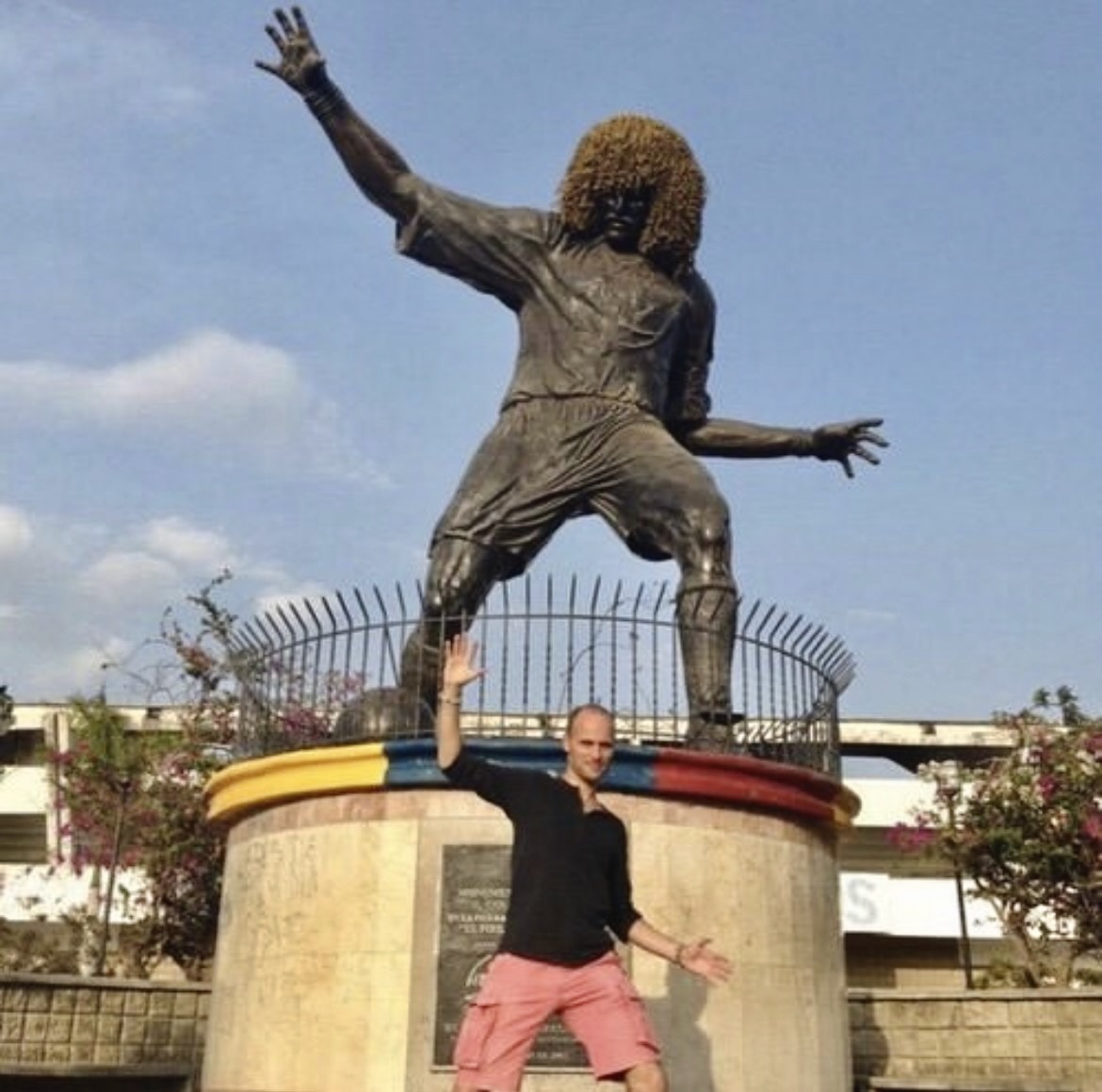
Much like most of Europe, South America’s premier sport is football or “soccer” to those reading in the north of the Americas. When it comes to footballing heroes in Colombia, the name Carlos Valderrama is held in high regard as one of Colombia’s greatest of all time, especially up in this neck of the woods.
With a devilishly distinctive hairstyle and silky skills on the ball, “El Pibe,” as he is affectionately known, was one of the most recognisable players during the 1980s and early 1990s.
Born in Santa Marta, the people of the city are proud of their fellow successful citizens, so much so that they erected a statue paying homage to Carlos”‘El Pibe” Valderrama.
A travelling football fan like myself should put this right at the top of the what to do in the Santa Marta checklist, anything above it would surely be heresy – especially considering the fact I’m a 90s kid and he was such an icon back then.
Whether a football fan or not, a visit to the monument of El Pibe is definitely worth a visit if only to wonder at how such a skilled sculpture could replicate those curly locks so accurately!
Know before you go:
- Location – The statue is at the crossroads of Carrera 18, Y Calle 16 just outside of the city centre.
- Cost – Free!
- Opening hours – 24 hours
- Time needed – Just enough time for a quick photo snap.
- Getting there – Take the 03A or 03G bus from the centre of town or jump in a taxi.
5. Santa Marta Public Market
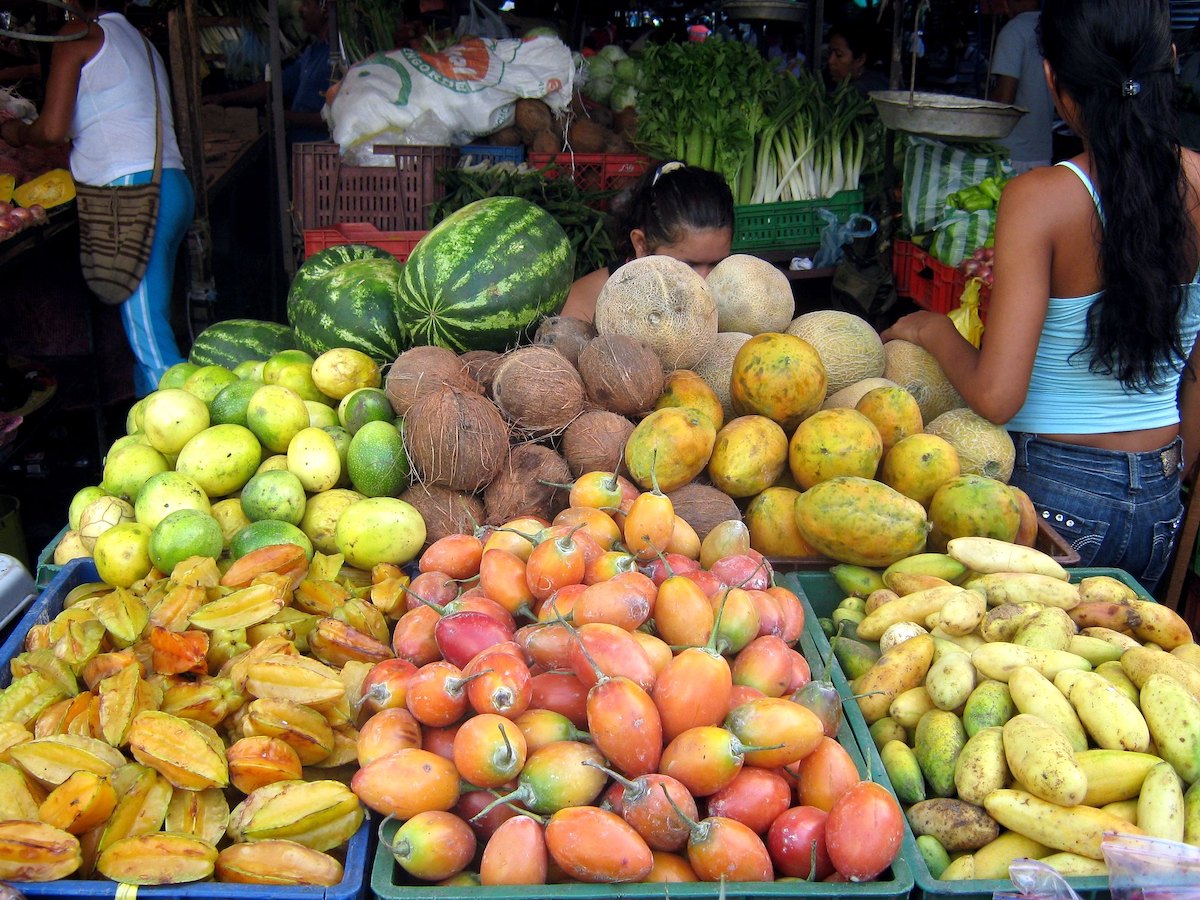
No trip to any major Colombian city would be complete without visiting the local market and Santa Marta is no different. This large traditional market is the epicentre of Santa Marta and a buzzing hive of activity and local exchanges.
With over five hundred vendors and stalls selling everything from hot food, fresh fruit, vegetables and a range of wears, the sensory overload of sight and smells is a thing to behold.
From grabbing something tasty to eat, securing yourself a traditional souvenir or simply soaking up the palpable atmosphere of a north Colombian market, this market is something that should sit proudly at the top of your list of what to do in Santa Marta.
Know before you go:
- Location – You’ll find the market smack bang in the middle of Carrera. 9, Santa Marta.
- Cost – N/A
- Opening hours – 2 am – 7 pm
- Time needed – Give yourself a couple of hours to grab something to eat and buy a few bits and bobs.
- Getting there – If you’re staying centrally, you’ll be able to reach the market on foot.
6. Take a Canoe To See 100s of Flamingos!
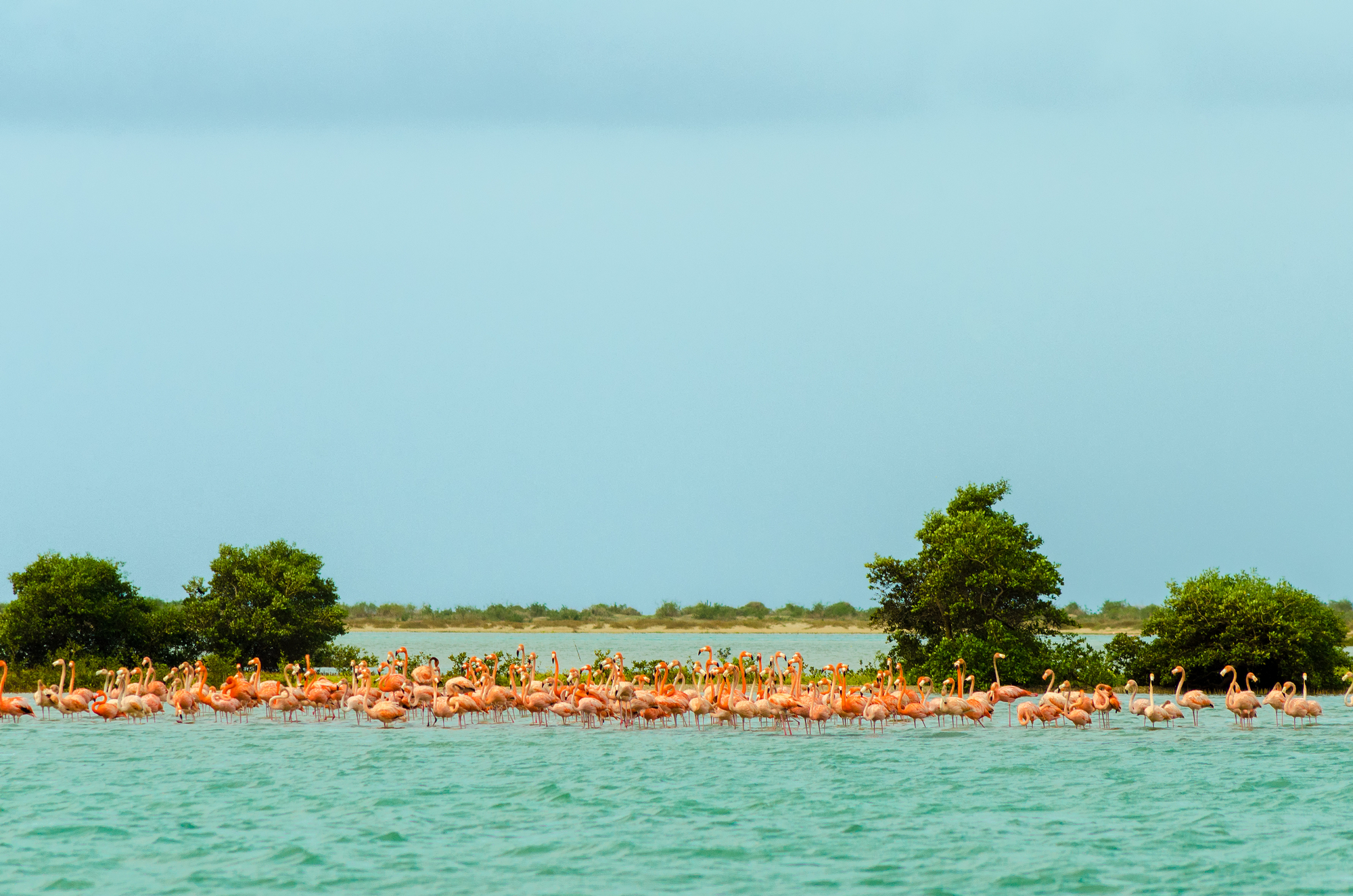
Found near the eastern Guajira Peninsula, is one of the region’s most unique and amazing sights, the Los Flamencos (Flamingos) Fauna and Flora Sanctuary. Made up of marshes, lagoons, and tropical dry forests, the sanctuary is a place of extreme natural beauty.
As the name suggests, the sanctuary is home to a huge population of American flamingos, a must-see sight for nature lovers.
One of the best ways to see these birds and to experience the Los Flamencos Fauna and Flora Sanctuary as a whole is to hire a canoe and set out on the water. Complete with a guide who knows the area and where the birds will be, you can catch sight of thousands of flamingos, especially during the wet season.
This entry is definitely more of a day trip as opposed to things to do in Santa Marta, but it’s worth it while you’re all the way up there already and have the time.
Know before you go:
- Location – 90 miles east of Santa Marta
- Cost – Entrance is free, but, say on Wayuu land, most visitors make a small contribution to the indigenous people who live here. Canoe trips will cost 30,000 COP per person.
- Opening hours – 7 am to 5.30 pm
- Time needed – Take a whole day to explore the sanctuary.
- Getting there – Getting to Los Flamencos Fauna and Flora Sanctuary isn’t as easy as just hopping on a bus. You’ll need to head to the main bus terminal and find a bus that’s heading to Camarones which takes around 2.5 hours. If you can find a taxi (they’re few and far between here) you can hitch a lift to the sanctuary, but more likely, you’ll need to make the 3km journey to the sanctuary on foot.
7. Hiking in The Lost City (4-5 days)
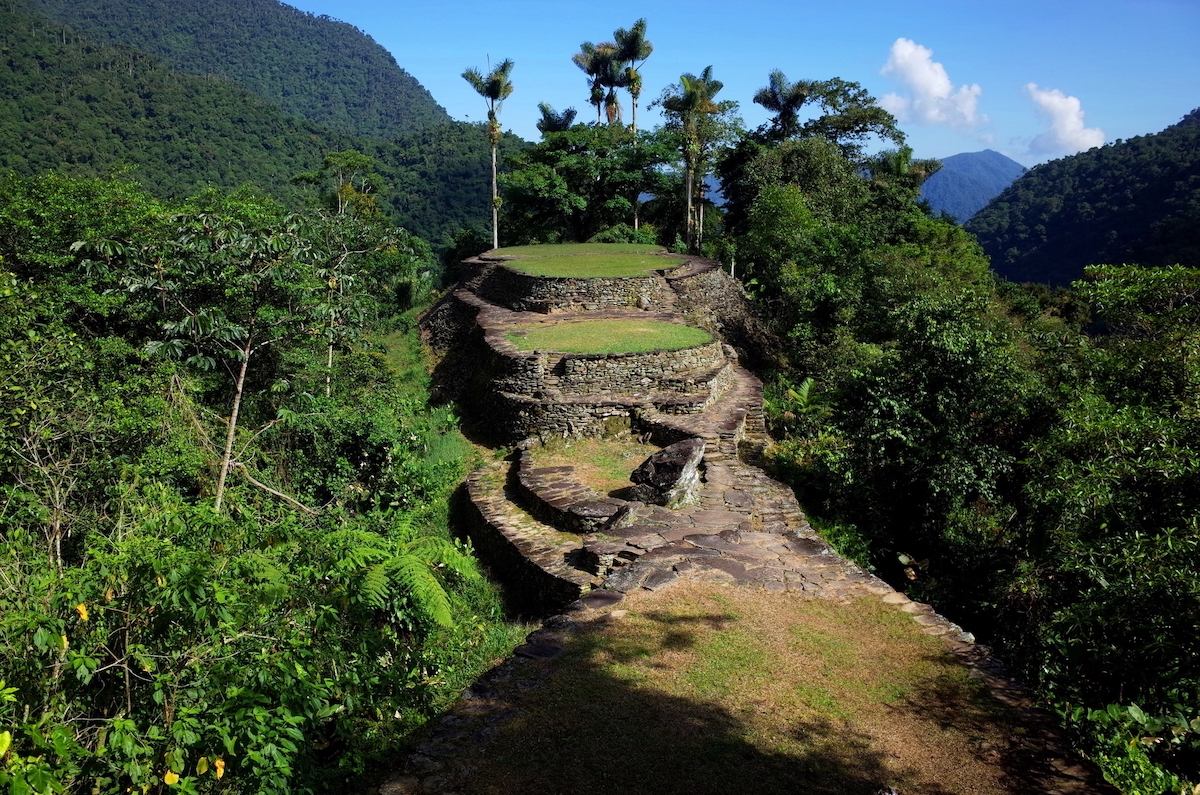
The South American Peruvian ruins of Machu Picchu are extremely well known, yet when it comes to the Lost City of northern Colombia, its fame is left wanting.
Amazingly, this ruined, lost city in the heart of the north Colombian jungle predates Peru’s most famous landmark by 650 years. Constructed around the year 800, the Lost City of Ciudad Perdida, as it is known locally, is made up of 169 terraces cut into the hillside and is a fantastic example of indigenous construction.
The site remained hidden from knowledge for over a thousand years until its discovery in the 1970s.
Visiting The Lost City is no easy feat; it takes around five days to trek the 25 miles to the site through jungle tracks and winding paths. You can’t do the trek alone either (as you are paying a visit to a sacred land to the indigenous peoples), so you’ll need to join a tour with one of the local guides in Santa Marta.
Here’s a little taster of what to expect on your five-day adventure through the Lost City:
Day One: Begin the first stage of hiking to camp one, which takes you three hours deep into the jungle.
Day Two: On the second day of jungle hiking, you’ll head to the riverside camp of Mumake. This takes around four hours.
Day Three: Includes a five-hour hike to the El Paraiso camp, only half a mile from the Lost City. This includes over 1,200 slippery steps up the ruins themselves.
Day Four: The morning of day four will be spent exploring The Lost City before lunch and a six-mile hike back to the Mumake camp.
Day Five: The longest hiking day, you’ll need to traverse nine miles back to your starting point. While this seems a lot, it’s actually all downhill so won’t be as tough as your hike on the first few days.
Know before you go:
- Location – The Lost City is set deep within the jungles of Santa Marta.
- Cost – You can only do the trek with a certified tour company, so be prepared to pay between $350/400 for the honour.
- Opening hours – N/A
- Time needed – Choose between the four or five-day route.
- Getting there – As the main jumping-off point to the Lost City, your tour agency will organise transport to and from Santa Marta.
8. Visit Tayrona Park (On a Multi-Day Trek)
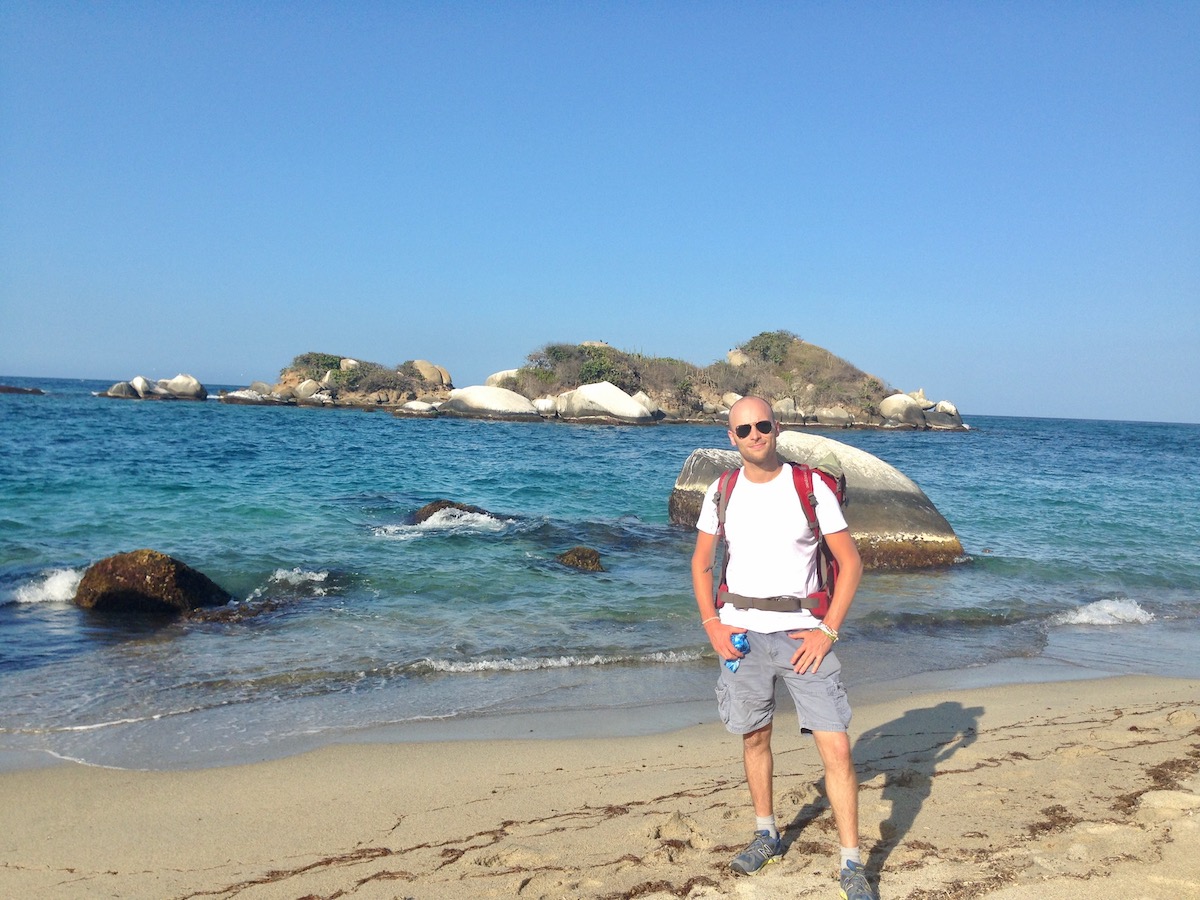
Just northeast of Santa Marta and only an hour away is one of northern Colombia’s most beautiful and picturesque places, Tayrona Park. A combination of stunning beaches, lush forest, rolling foothills and mountains, this protected area is one of the most visited national parks in the country and I’d go as far as to say it’s worth the hassle getting here even if you’re not even in the area!
While you can pull off a one-day trip here, the travelling to and from and your time there will all feel a little too rushed to appreciate something of this magnitude. I’d suggest a multi-day trek through the national park, and with campsites peppered throughout the park, staying over is an experience in itself.
First of all, the beaches of northern Tayrona Park are some of the best in the area. If you visit just one, make it Playa Cristal Beach with its crystal clear waters and fantastic snorkelling opportunities.
Aside from relaxing along the beaches, Tayrona Park is a perfect place to seek out some of Colombia’s rarest wildlife; it’s one of the only places in the world you can see the Cotton-top tamarin in the wild, a pretty funky-looking mammal.
A combination of lush jungle hikes and pristine Caribbean beaches, a few days spent trekking and exploring Tayrona Park is a must when you’re looking for an all-around here option of things to do in Santa Marta.
Know before you go:
- Location – East of Santa Marta, around an hour’s drive away.
- Cost – Around 54,000 COP entrance fee.
- Time needed – You can do the trek in one day, but it’s not really enough to see and do everything. Plus, who wants to rush their way through this place?
- Getting there – You can catch a speedboat from Taganga or get a bus heading towards Palomino from the centre of Santa Marta. Just let the bus driver know where you’d like to stop off.
9. Day Trip To La Guajira (The Caribbean Desert!)
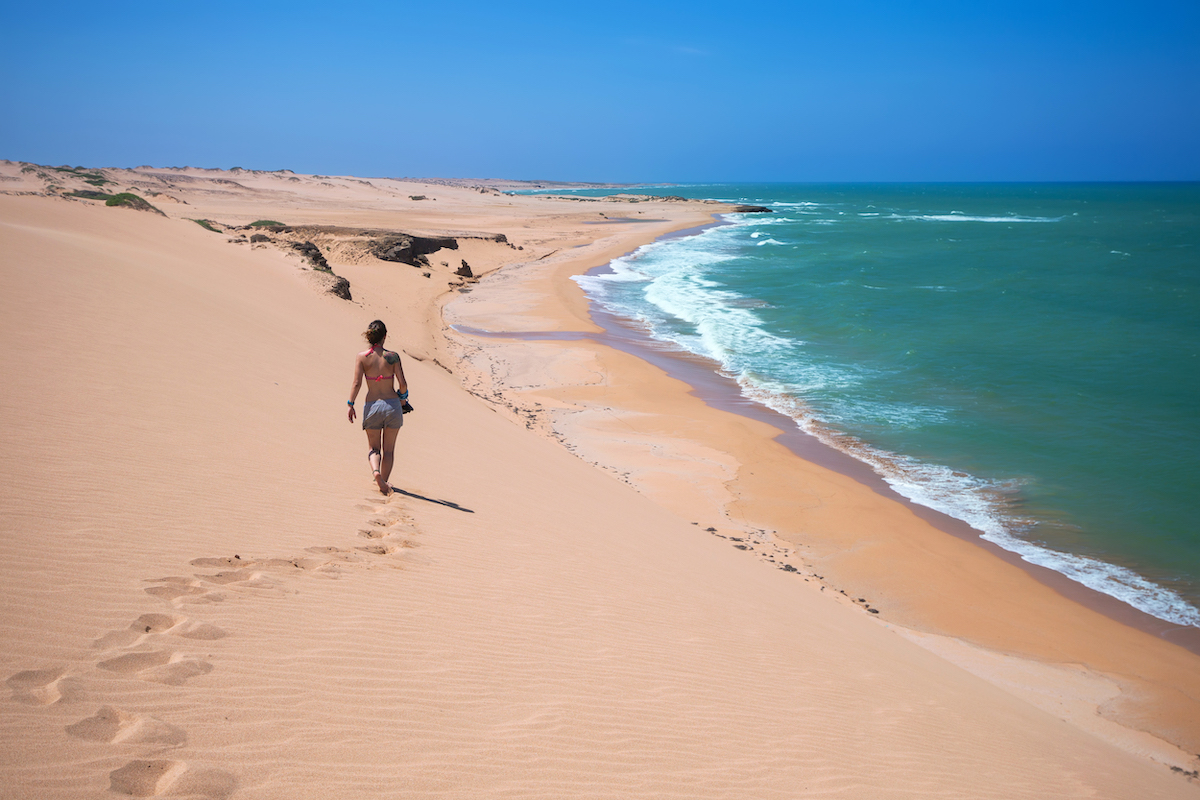
To the east of Santa Marta is the most northerly area of the whole South American continent and a desert peninsula known as La Guajira.
This is more like a couple of days’ adventure as opposed to a day trip, in all honesty, and well worth putting in the effort to experience it.
Home to huge sand dunes, vast swathes of desert landscapes and the lapping shores of the Caribbean Sea, there is nothing quite like La Guajira. This region is dominated by the indigenous Wayuu people who make a living from fishing along the coast.
Once you have visited the desert peninsula, you can head a little further north to the official most northern spot on the South American continent; not a bad thing to tick off your “things I’ve done” list.
Know before you go:
- Location – Around 115 miles east of Santa Marta, but a 215-mile journey by road.
- Cost – Once you’re in Cabo, your tour will cost around USD$40 for three hours of exploration.
- Time needed – At least a couple of days including travel (with an early start!).
- Getting there – To get to La Guajira, you’ll need to get to Riochaca first – the largest and closest city to the desert. Head to the Bus terminal in Santa Marta and catch a bus labelled with Riohaca which will take between 3-4 hours. From Riohaca, it’s another public bus (or shared taxi) to Uribia, which takes around an hour. In Uribia, you’ll find 4×4 jeeps heading to Cabo, all of which leave before midday. Once you’re in Cabo, you can finally organise a tour around the desert, motorbikes are an option for those who fancy it.
10. Scuba/Snorkelling in Taganga
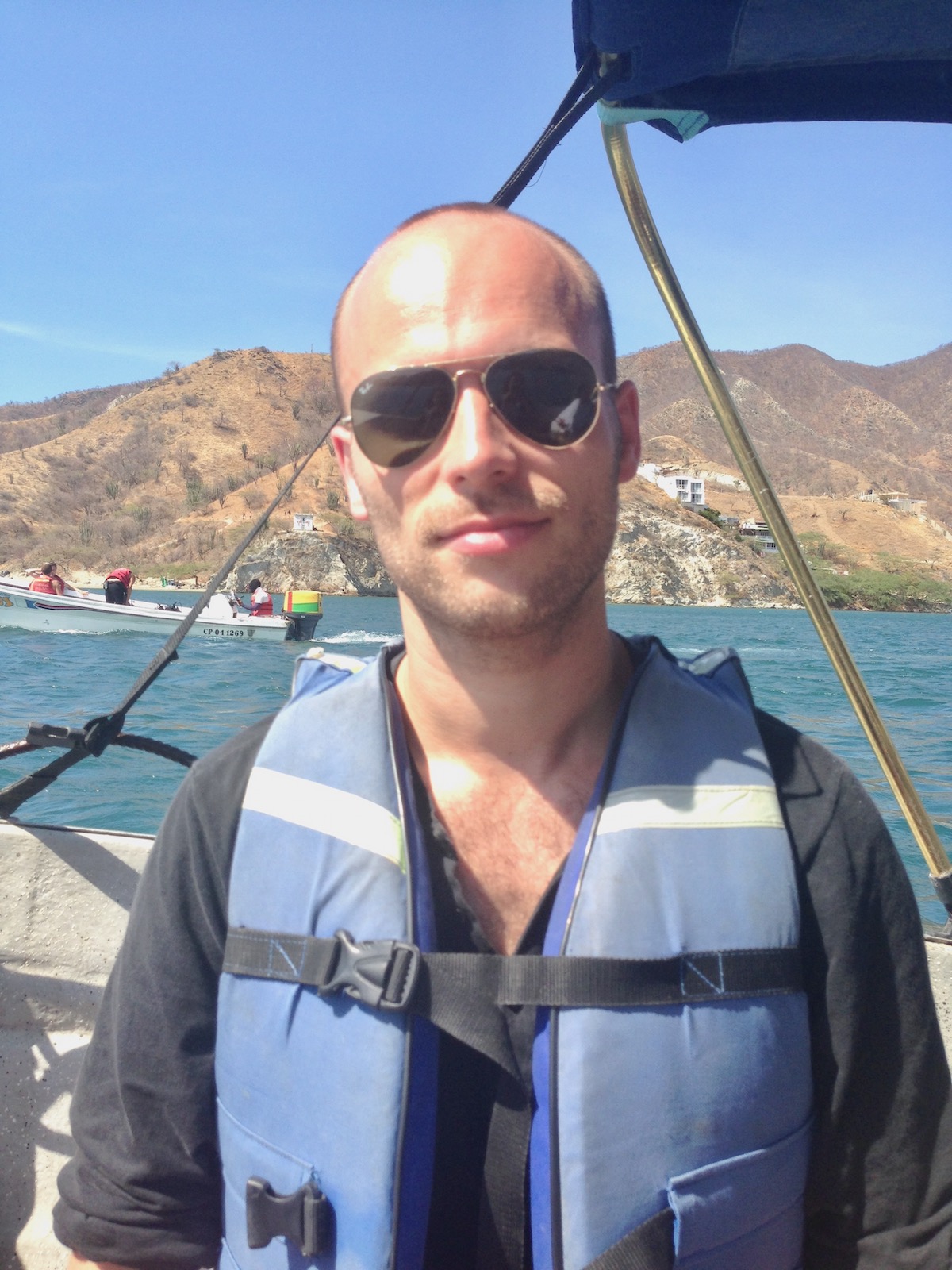
The aforementioned town of Taganga has developed into a perfect site for scuba diving and snorkelling over the past few years. The waters surrounding the shoreline of Taganga are home to marine life (giant turtles and whale sharks etc), and with numerous diving shops and instructors calling the town home, Taganga is a viable option for hardcore scuba divers and casual snorkellers alike.
If the idea of scuba diving doesn’t appeal, the coastal shore around the town can also be simply explored with a snorkel, owing to the colourful coral reef.
The price compared to other spots around the globe also make Taganaga an attractive place to scuba dive or even get your PADI license. If you time your visit right, you can sign up for a three-day PADI course for around $200 USD.
Know before you go:
- Location – Taganga sits just three miles north of Santa Marta.
- Cost – COP$1,800 for the bus fare each way and around USD $200 for a three-day PADI course.
- Opening hours – N/A
- Time needed – You’ll only need half a day.
- Getting there – A number of buses leave regularly from Santa Marta including the Blue City Bus which you can catch from the market, or jump in a minibus (look for signs in the window that say Tatanga) from the main bus terminal. Both options will set you back COP$1,800 each way.
11. Go Sailing
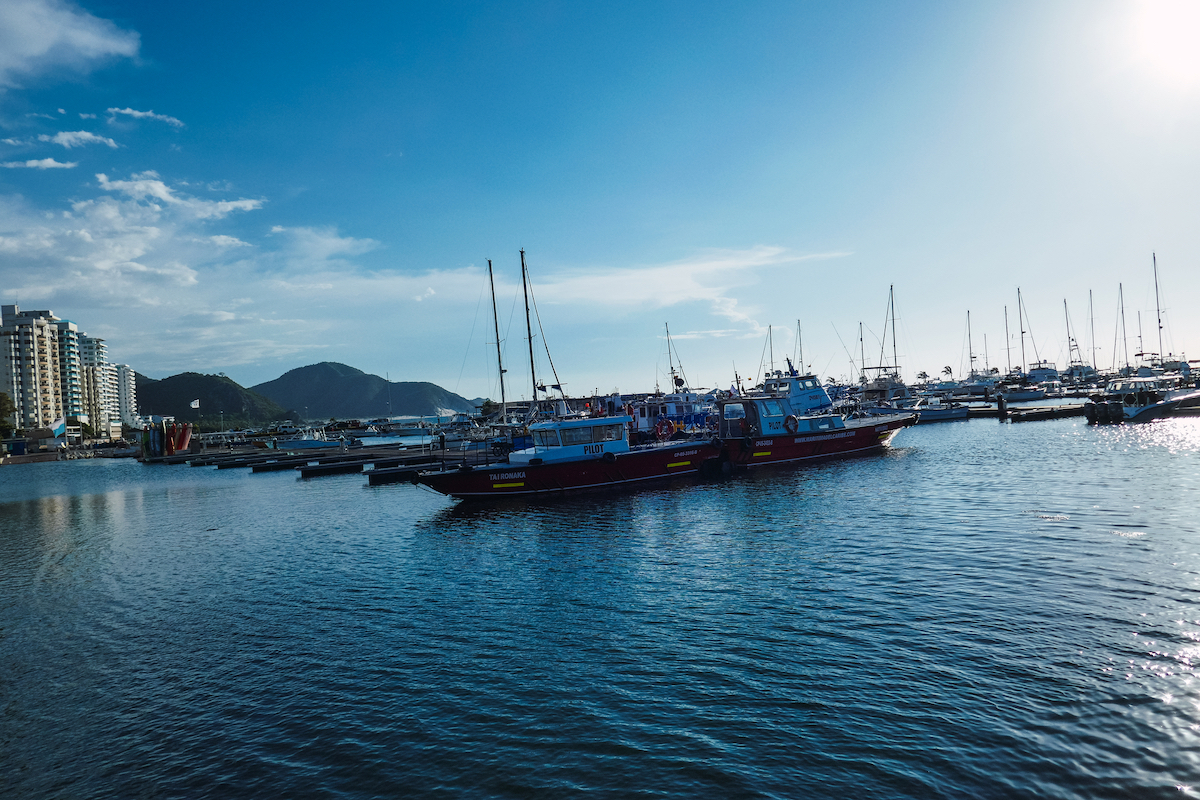
With such beautiful waters surrounding Santa Marta and the Caribbean coast, it’s sometimes more enjoyable to sit back and enjoy a day out on the deck of a boat.
The majority of boat trips will take you north to Tayrona Park, but there are a few companies that offer leisurely days at sea a little closer to home. Setting sail from the marina in the centre of Santa Marta, you can head out through the bay of Taganga and Granate for a day’s sailing around the coastal waters.
Similar to trips you can experience in the Caribbean, take your time sailing around the turquoise waters and even dabbling in a little snorkelling close to the boat.
Taking a day out to boat around Santa Marta is a perfectly chilled experience, a few hours excursion where you just simply relax and let the water pass you by and take in the beauty of the Caribbean.
Related Post: San Blas Islands Travel Guide
Know before you go:
- Location – Santa Marta Marina
- Cost – Around 150,000 COP to rent a boat for a few hours.
- Opening hours – Get a rental from around 9 am.
- Time needed – Give yourself at least a morning to enjoy some time on the water.
- Getting there – If you’re staying centrally, you’ll be able to walk to the marina from town.
12. Hike to Quebrada Valencia
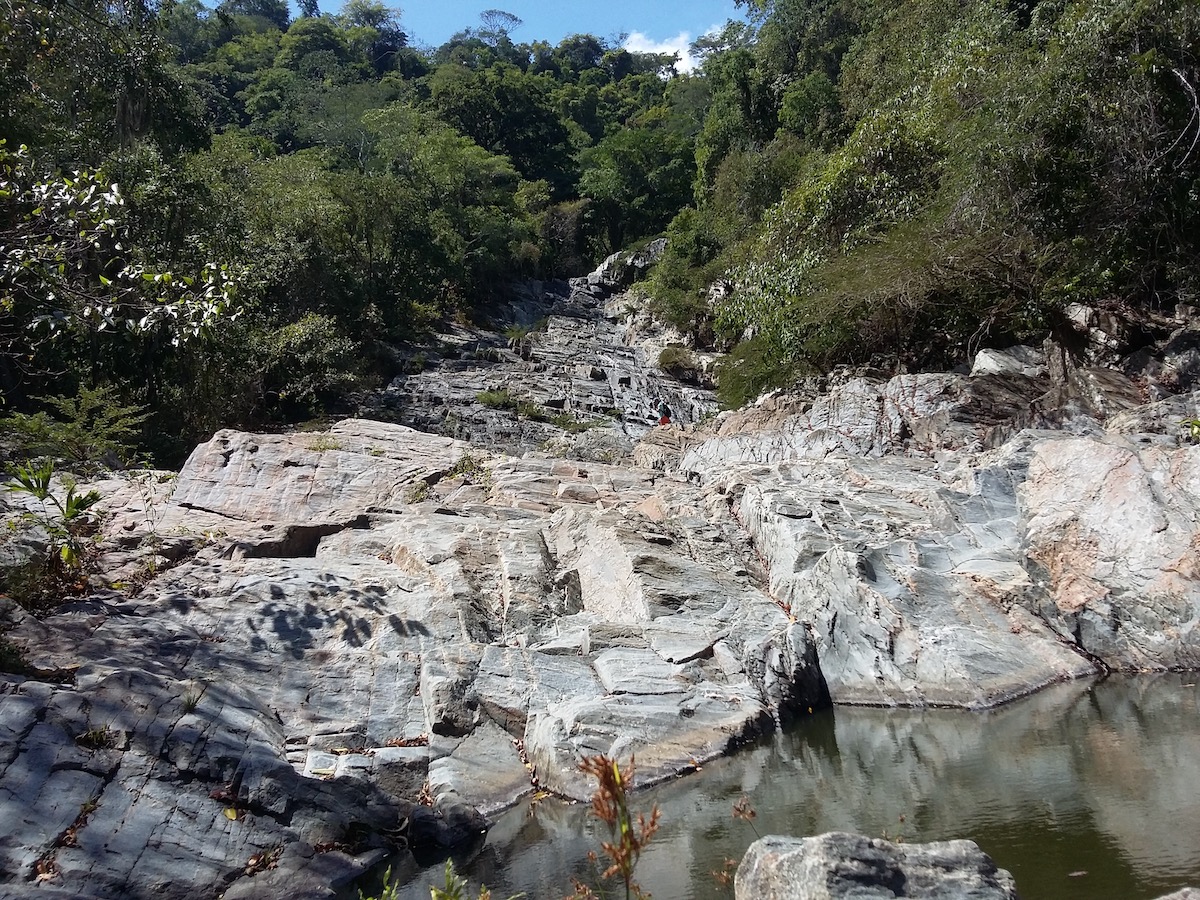
The waterfalls of Quebrada Valencia offer up one of the most rewarding destinations for hikers and nature lovers. The winding track is just over two miles and leads you through a jungle route to a cascading waterfall and wild swimming spot.
This hike is okay for a range of skill levels and shouldn’t be too demanding – just make sure you head there early in the day before it gets too warm. With winding jungle tracks and numerous rock formations, hiking to Quebrada Valencia during the rainy season can be a little treacherous.
Avoid making for Quebrada Valencia during the rainy season between May and November as the weather can really become a hindrance here.
The waterfalls and swimming spots are enjoyed by both tourists and locals alike and can be a real delight when cooling off from the day’s heat. But that means it gets pretty busy at the weekend, so aim for a weekday visit if you can.
Know before you go:
- Location – Quebrada Valencia is 30 miles east of Santa Marta.
- Cost – 3,000 COP entry fee
- Opening hours – 9 am – 5 pm.
- Time needed – Around 4 hours to complete the hike and enjoy a dip.
- Getting there – Jump on the bus from the Santa Marta’s market that heads towards Palomino and ask the driver to stop off in Quebrada Valencia.
13. Paddle Boarding in Don Diego
Don Diego is a small settlement along the Don Diego River, just east of Santa Marta. The river runs from the Sierra Nevada mountains in the centre to the northern coast. As a true adventure traveller looking for what to do in Santa Marta, travelling through Don Diego is one of the most rewarding activities you can experience in the area.
Paddleboarding along the river down to the coast means you can truly immerse yourself within the environment of Northern Colombia, surrounded by the flora and fauna of the forest until the water opens up into the sea.
Know before you go:
- Location – An hour’s drive east of Santa Marta.
- Cost – Can’t remember and don’t want to lie…sorry!
- Time needed – Give yourself the whole day
- Getting there – You’ll generally need to book a tour to do this and they’ll arrange transport for you.
14. Marinka Waterfalls
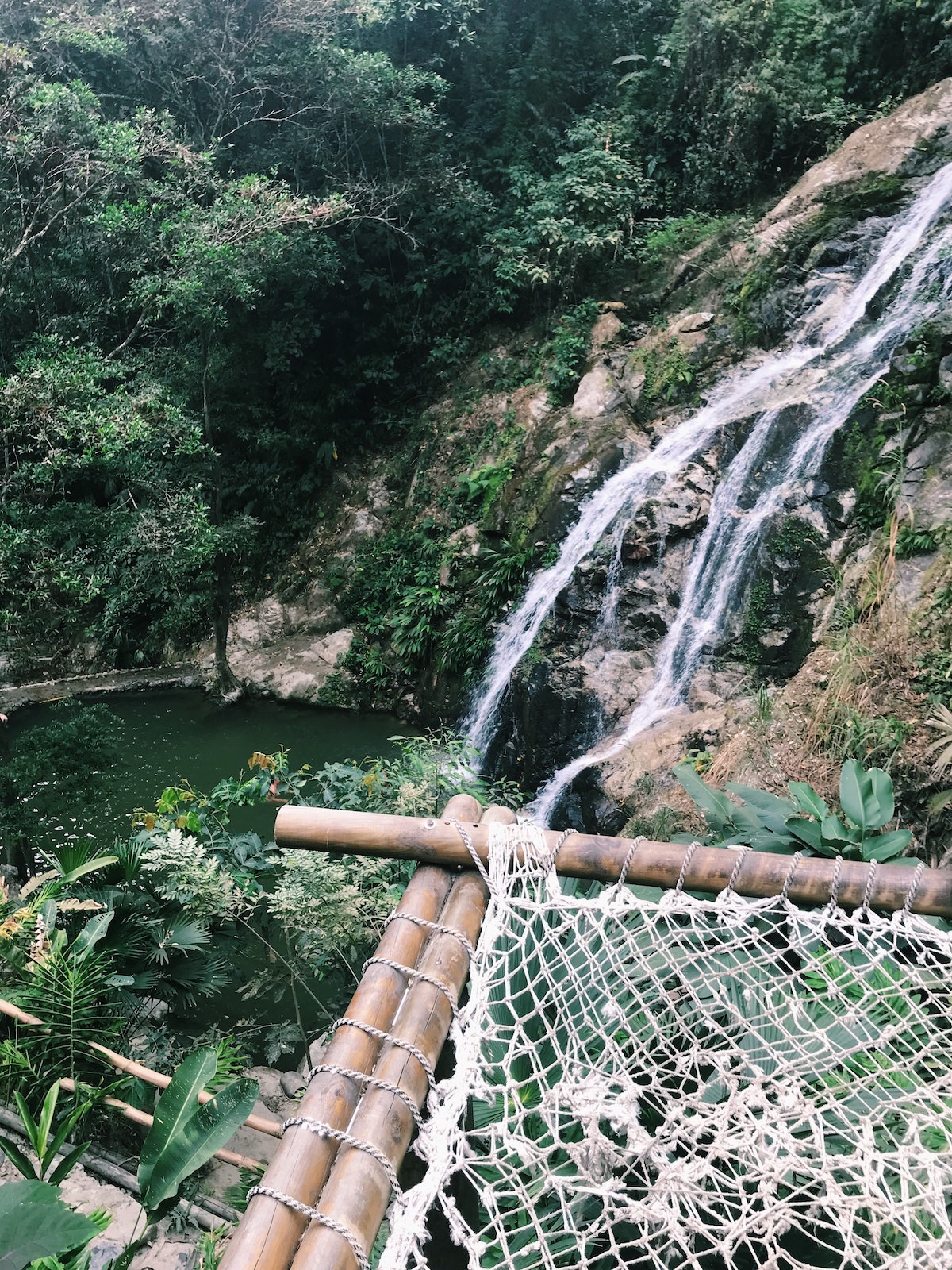
You’ll find the Marinka Waterfalls just south of the town of Minca, an hour’s drive from Santa Marta. Another example of the beauty of nature surrounding this area, the waterfalls of Marinka are a collection of wild swimming holes surrounded by a lush jungle setting.
Close by to Marinka Waterfalls are also some of the oldest coffee farmlands in the country. With a few built-up areas, including Mica, the waterfalls aren’t as isolated as many other natural beauty spots around Santa Marta, and you can head back for some local lunch once you’ve enjoyed everything the waterfalls have to offer.
Know before you go:
- Location – The Marinka Waterfalls are located 15 miles south of the town of Minca, around an hour’s drive away.
- Cost – $5,000 COP entry fee.
- Opening hours – 9 am – 5 pm.
- Time needed – A good five or six hours.
- Getting there – You can get a bus from the main bus terminal which will cost around 10,000 per person. From Minca, you can walk to the falls in 40 minutes or grab a moto-taxi (there’s usually plenty waiting outside the bus terminal).
15. Learn About The 4 Indigenous Peoples of Santa Marta
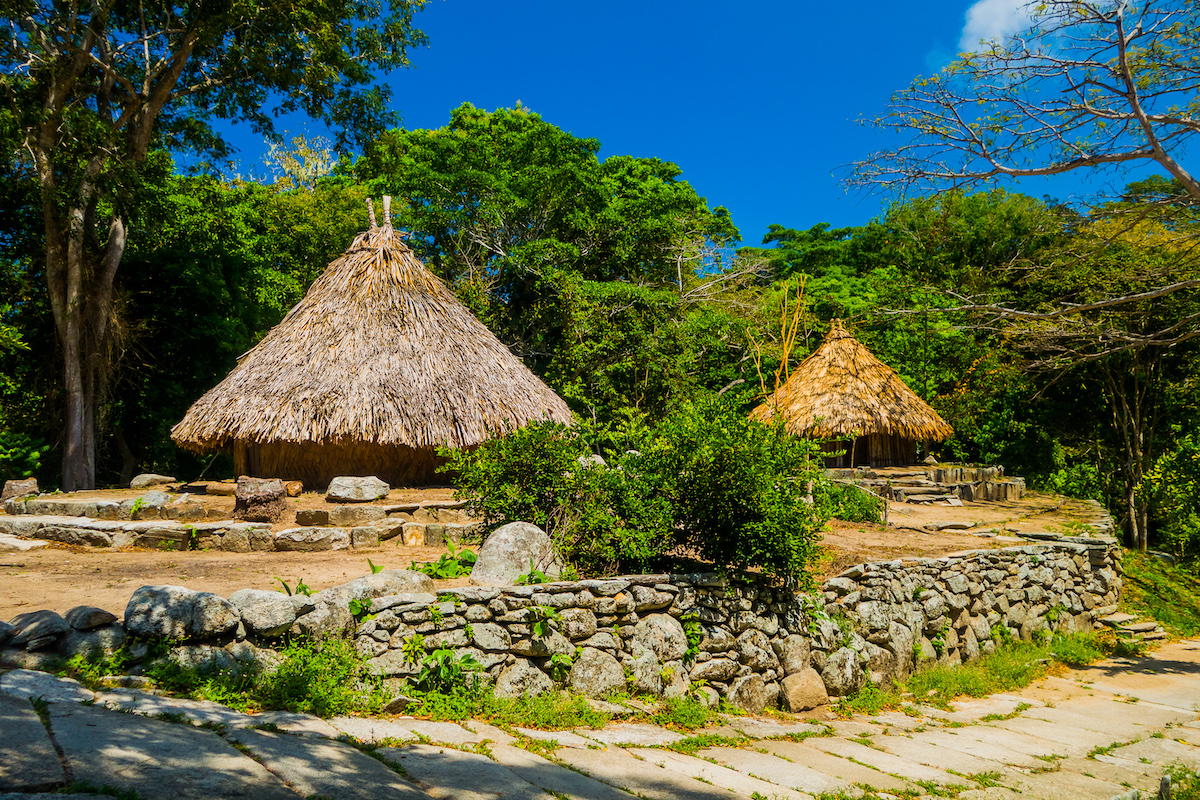
Santa Marta and the wider North Colombia regions are the historical homes of four indigenous peoples who still call the land home. These peoples include the Kogi, Arhuaco, Wiwa, and Kankuamo, many of which are part of the border Tairona peoples of northern Colombia.
The Kankuamo people differ from the others in being the least contacted by the outside world and have developed ways of avoiding integration with the majority of the population. You can visit some of the other communities on a day trip from Santa Marta, heading into the ancient homes and regions of the indigenous communities.
After centuries of complexities and exclusion, many of the indigenous communities have developed negative feelings towards outsiders, so your visit should be carried out with the utmost care and sensitivity.
This being said, positive and responsible tourism has been welcomed by the communities. When visiting these indigenous peoples, it is important to have a strong level of respect for the communities, such as asking permission before taking photographs and making financial contributions before you leave.
Know before you go:
- This is one of those “who you know” situations. If you opt for a tour on any of the items suggested in this article, the guides will have a contact where they can set up an invitation for you (that’s what I did).
16. Sunset Stroll on the Bastidas Boardwalk
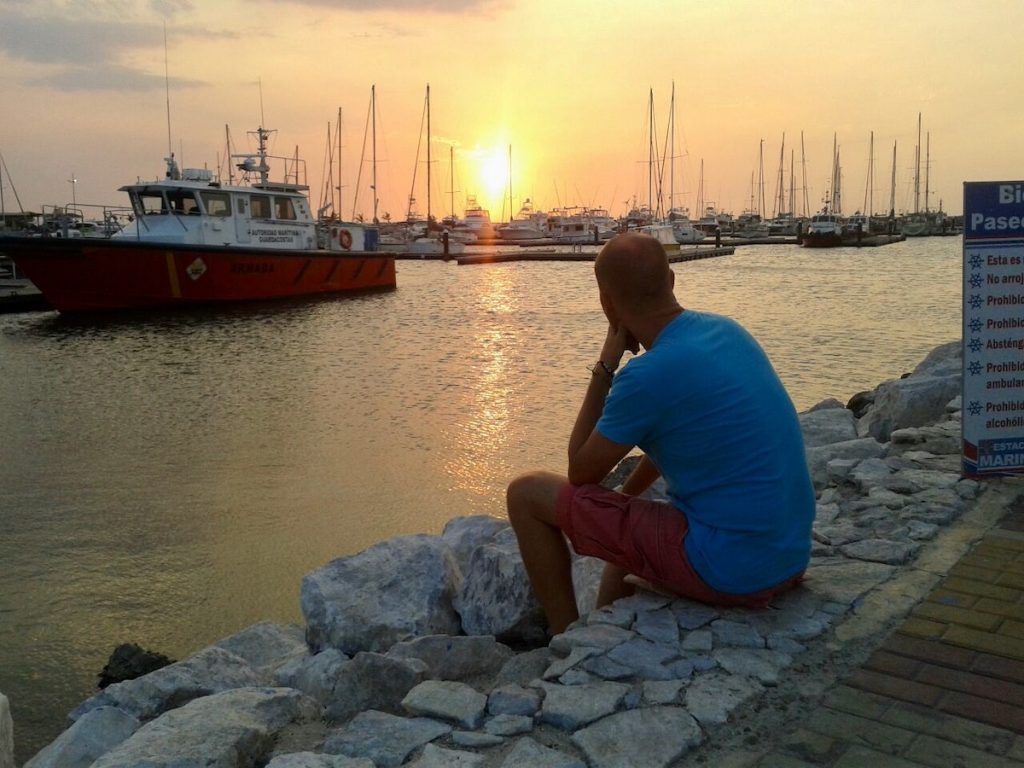
If you don’t fancy travelling too far to enjoy a memorable sunset or sunrise, Santa Marta’s Bastidas Boardwalk offers up a picturesque spot within the city to watch the sun disappear.
The Bastidas Boardwalk covers a strip of the road right next to the bay, providing stunning views of the shoreline and the city’s marina. Here you can wander down to the coast and the Bastidas Boardwalk just as your day ends in the town, gathering with a drink in hand to watch the sunset over the bay.
Know before you go:
- Location – Santa Marta Marina
- Cost – Free
- Opening hours – This place never closes!
- Time needed – Enjoy a chilled-out evening with a few beers while watching the sun go down.
- Getting there – It’s easy enough to walk here from most hotels in central Santa Marta.
17. Wander Bahia de Santa Marta
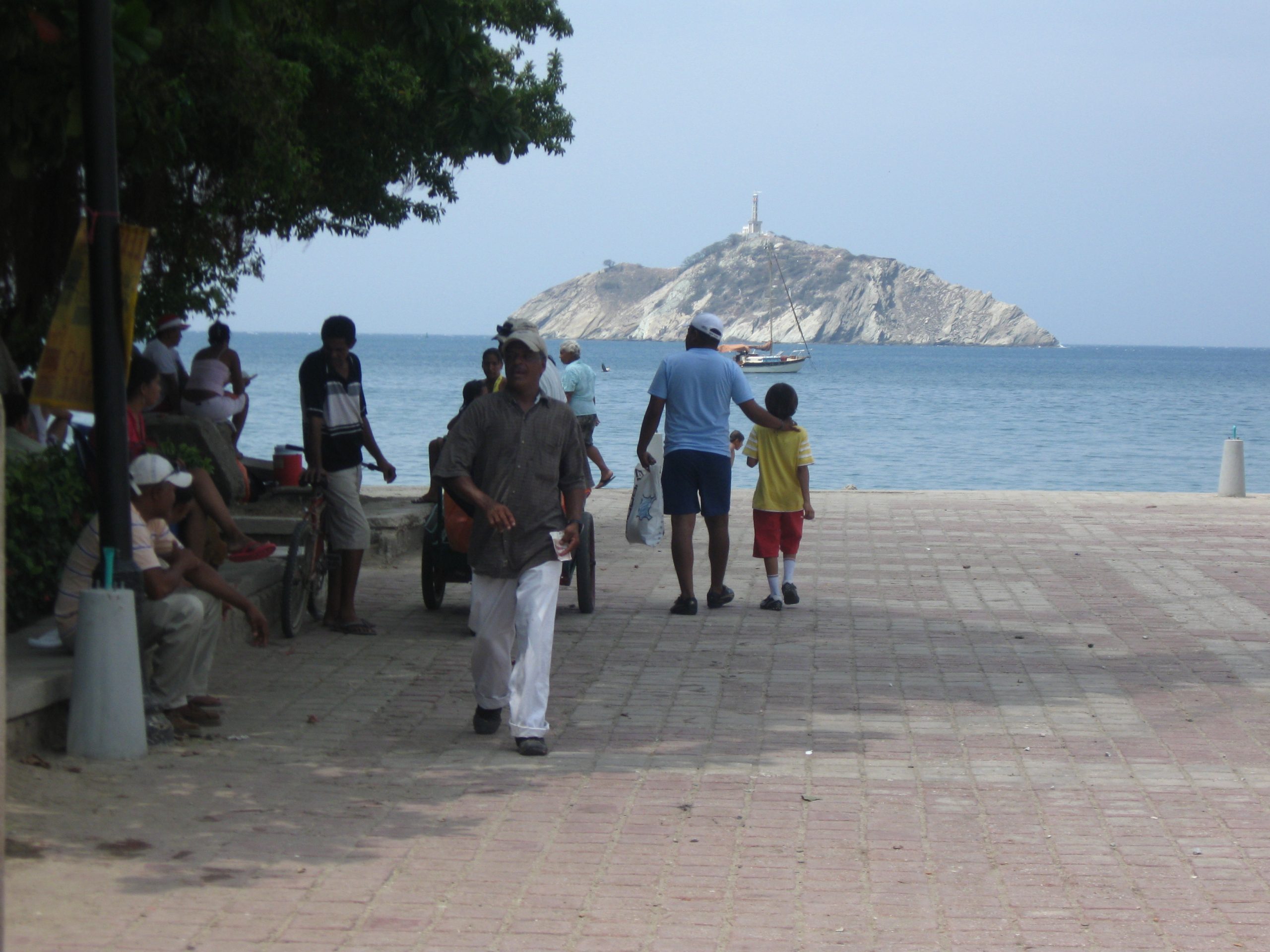
A stumbling distance away from the boardwalk is the Bahía de Santa Marta, a popular spot to watch the rising and setting of the sun over the city.
This open bay provides onlookers with the perfect scope of view, right across the horizon. Alongside the great views, the collection of boats moored in the bay only adds to the picturesque nature of the sunset here.
Much like the Bastidas Boardwalk, Bahía de Santa Marta is one of the epicentres of both locals and visitors to Santa Marta, as its location is so easy to get to. This, of course, has its own drawbacks, as large crowds gather here each night.
Know before you go:
- Location – Santa Marta Marina
- Cost – Free
- Opening hours – 24 hours!
- Time needed – A few minutes for a quick snap and then head to a nearby bar for something to drink.
- Getting there – Walkable from most accommodations in the city.
18. Coffee Tour in Minca
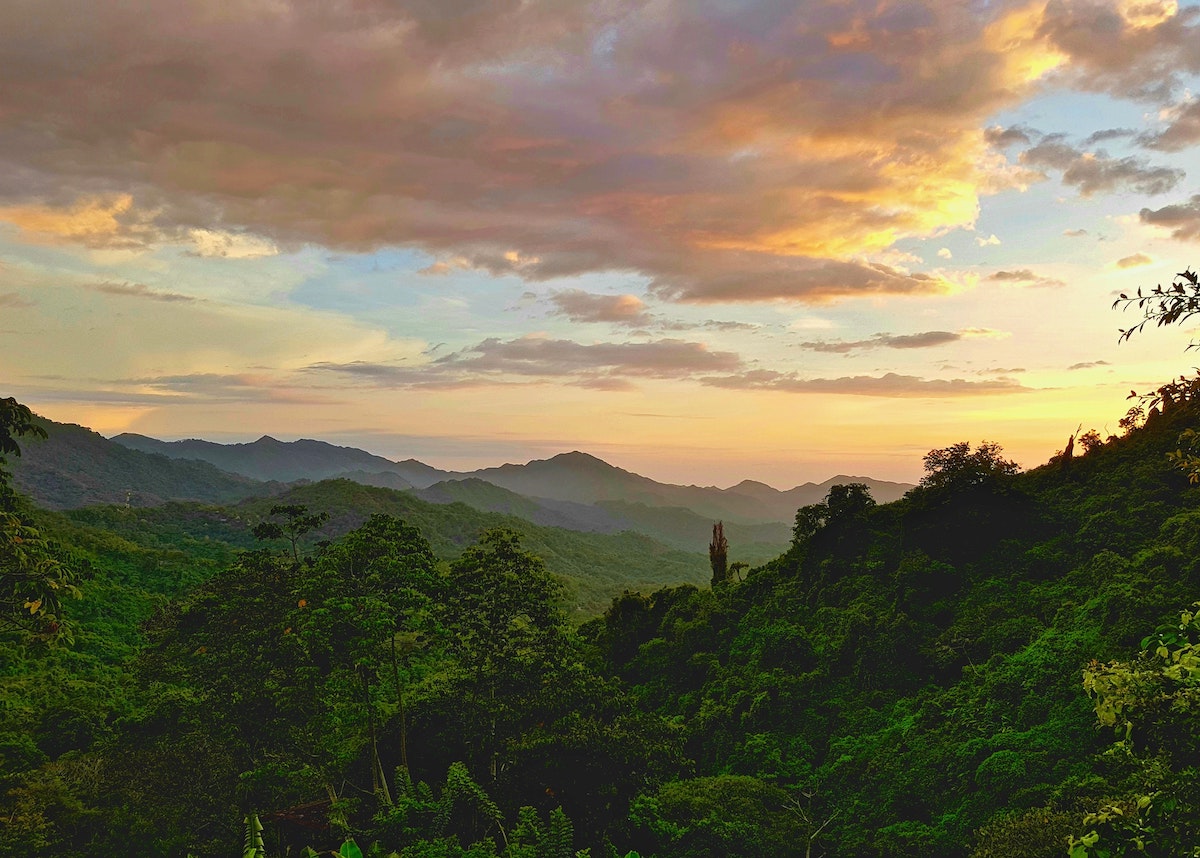
If there’s one beverage that really stands out when we think of Colombia, it would of course be coffee. After Brazil and Vietnam, Colombia is the largest grower and exporter of coffee in the world and the nearby town of Minca is one of the oldest coffee-growing regions in the entire country.
To really get a sense of the entire coffee growing process and production, it’s worth joining a coffee tour of the region. La Victoria Farm, just outside of Minca, is the perfect place to see the coffee growing process in all its glory.
Named after British Queen Victoria, for the fact that most of the machinery here was made during her reign, La Victoria is one of the oldest coffee farms in the country.
A visit to the La Victoria coffee farm gives you an insight into the process of the coffee beans once they’re harvested but its beautiful surroundings only add to the experience too. And, if you want to savor the experience, learn how to brew the perfect coffee at home with Arne’s guide.
If coffee isn’t your cup of tea then still consider a meander around Minca as there are plenty of other Minca activities in this beautiful part of Colombia.
Know before you go:
- Location – La Victoria Farm sits just outside of the city of Minca.
- Cost – Tours cost around COP$10,000 per person and last 45 minutes.
- Opening hours – 9 am to 5 pm.
- Time needed – You’ll need to allow at least half a day to travel to Minca and complete the tour.
- Getting there – You can get a bus from the main bus terminal to Minca which will cost around 10,000 Colombian pesos per person each way. From Minca, you can choose to climb the steep hill (around a two-hour walk) or grab a moto-taxi from the middle of town.
19. Party at Rodadero
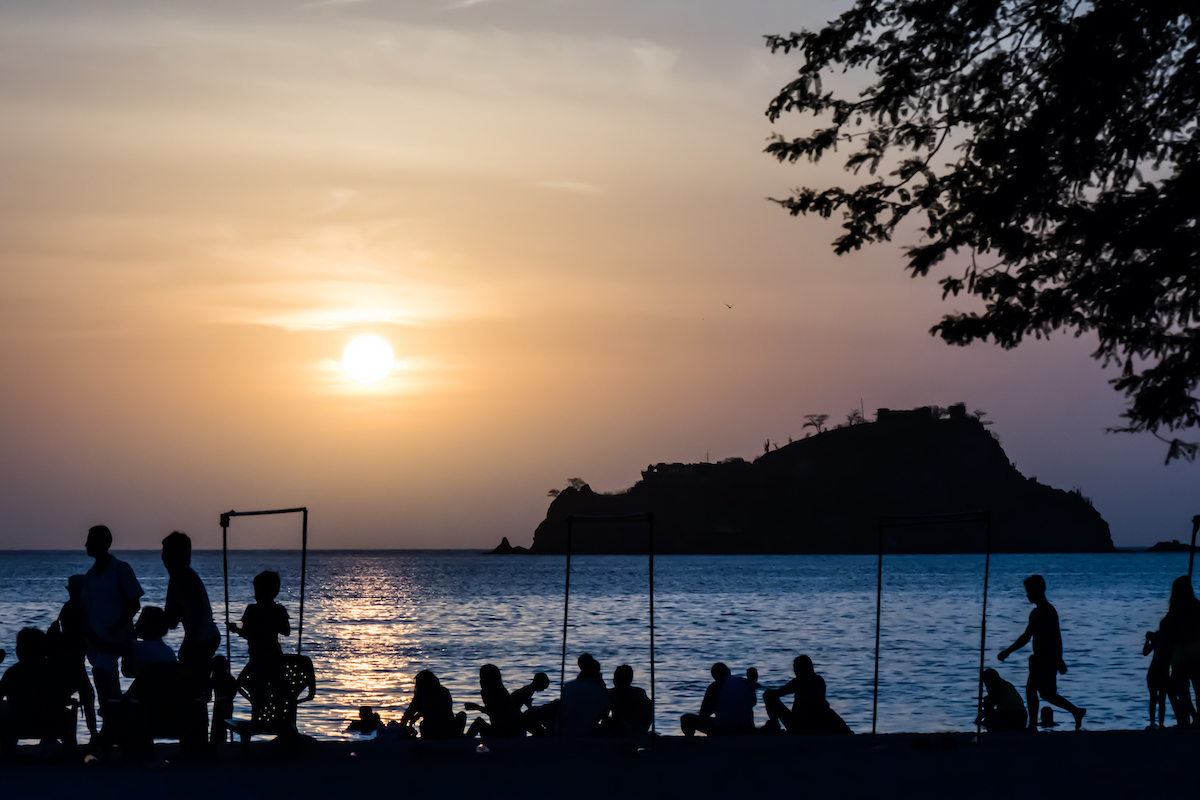
Aside from downtown Santa Marta, you can count on Rodadero Beach to have a memorable night out in the city. One of the most popular beaches along the Colombian Caribbean during the daytime hours, the whole area really comes to life once the sun goes down.
Much like the lively Lapa neighbourhood of Rio, a festival-like atmosphere breaks out in the Rodadero area, with a selection of live music and artists performing along the sand, performing accordion-based Vallenato music and many others.
Many of the bars and restaurants in Rodadero stay open well into the late hours, providing a fantastic party atmosphere throughout the night. With sea, sand, and the rhythms of Colombian music to keep you going, partying at Rodadero is a great way to mix with locals and travellers.
Know before you go:
- Location – Santa Marta city centre
- Cost – Bar entry is usually free with drinks starting from COP$10,000.
- Opening hours – 12 pm till late.
- Time needed – This one’s up to you!
- Getting there – Grab a taxi from your hotel or walk it from anywhere in the centre of town in about ten minutes.
20. Rehydrate With Limonada de Coco!
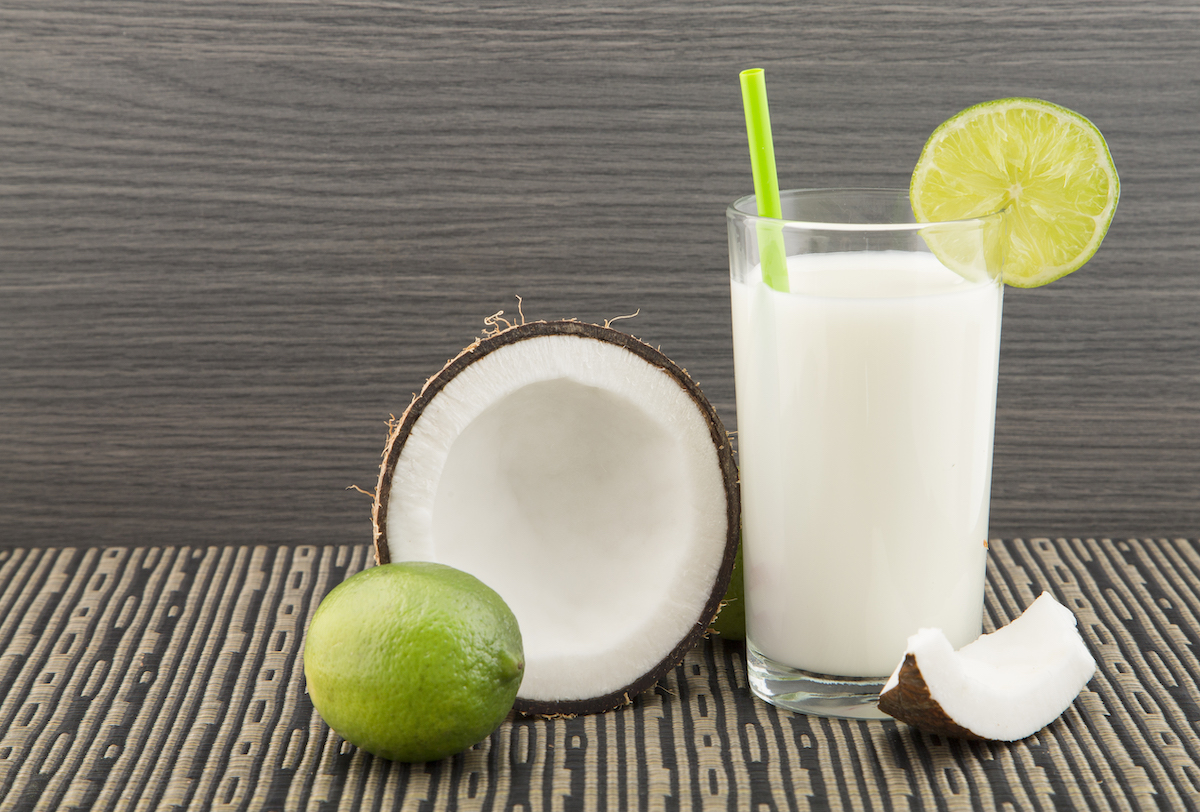
One of the most notable and refreshing drinks to be found in the area, and Colombia as a whole, is Limonada de Coco.
An unbelievably moreish combination of unsweetened coconut milk, freshly squeezed lime, sugar and ice, one hit of this and you’ll be craving many more on those hot summer days in Colombia. It’s a favourite amongst Colombians and you’ll find it on most menus across Santa Marta.
21. Search For The Best Arepa
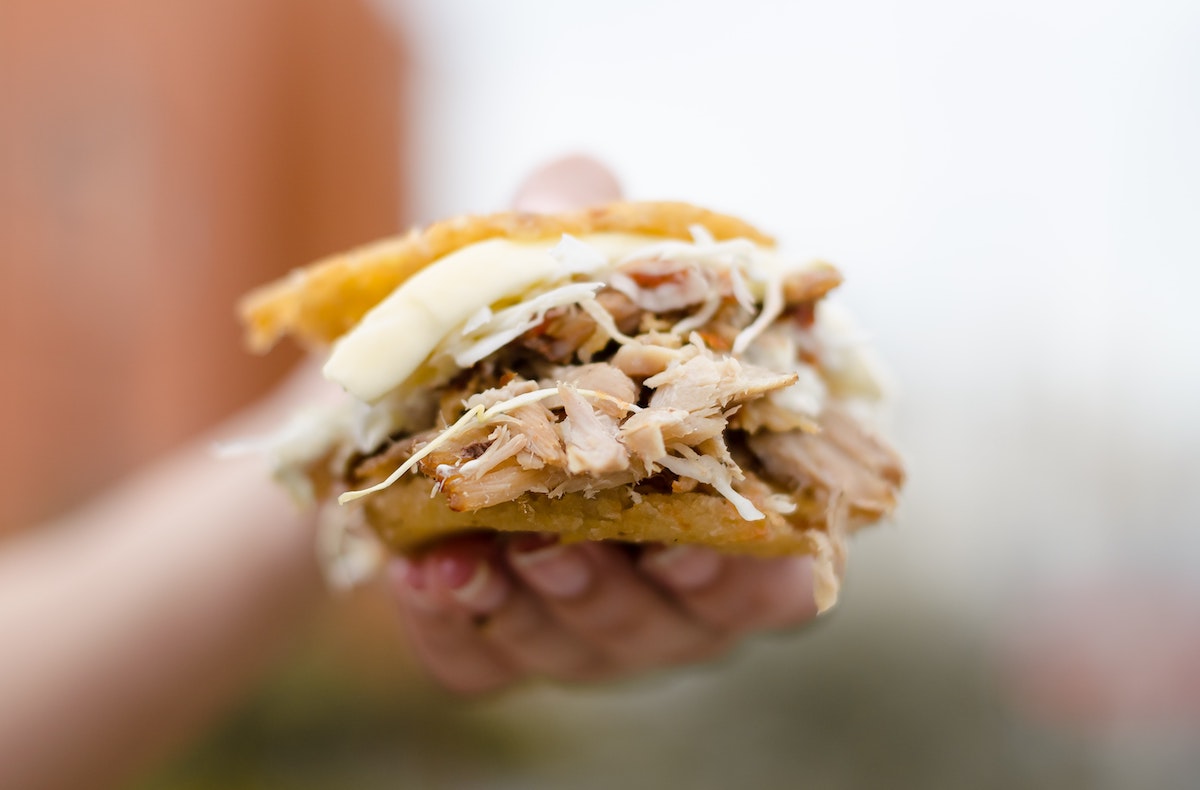
One of the most defining dishes of northern South American cuisine is the arepa, a patty made from ground maize and filled with black beans, plantain and a variety of other ingredients, depending on the cook.
These can be found all over Santa Marta and the nation of Colombia, in street food stalls and restaurants. Finding the best one might be a trip-long quest as they can come in all shapes and sizes, with a variety of ingredients.
Be careful mentioning this delicacy in front of the listening ears of local Venezuelan immigrants… Colombians and Venezuelans have been fighting for aeons over who invented this tasty little snack…best to stay out of that Latin crossfire.
One of the favoured places to dine on this famous pre-Colombian dish is the Lulo Cafe Bar. renowned for searching up delicious arepa. This being said, the ‘best’ arepa all comes from personal taste and preference – you’ll have to search around to find the one that best suits you.
Know before you go:
- Location – Lulo Cafe Bar, Santa Marta
- Cost – Arepas start from COP$20,000
- Opening hours – 8 am to 10 pm
- Time needed – An hour or so.
- Getting there – You should be able to walk here from the most centrally-located hotels and hostels in Santa Marta.
22. Have a Cup of “Tinto” At The Crack of Dawn
The word “Tinto” starts to be a little confusing for a learner of Spanish, the further north you venture in Colombia. In most Spanish countries it refers to red wine, but the costeños of Santa Marta use it as slang for a small sugary coffee that is sure to give you that burst of energy first thing in the morning. I spent many hours wracking my brains on myassignmenthelp to understand frustrating nuances like this right while struggling with the Santa Marteña dialect.
In true Colombian style, these small coffees are sold via a vendor walking in the streets and calling ‘Tinto!’ A walking street food delight, these coffees are super cheap and robust and are the perfect pick me up for those awake before the sun starts to make an appearance.
I purposefully did not add an image here to add to the mystique of the Tinto man!
Know before you go:
- Location – Throughout the streets of Santa Marta.
- Cost – 500 Colombian Pesos for one cup.
- Opening hours – These guys start early – you’ll find someone selling something from 5/6 am.
- Time needed – Just long enough to get that caffeine fix well underway.
- Getting there – Slumber around town at sunrise. You won’t need to find him…he’ll always find you!
23. Placita Vieja Hotel Boutique Spa
For the ultimate chillout and relaxing experience, why not check yourself into the Placita Vieja Hotel Boutique Spa? The Placita Vieja Hotel Boutique Spa stands in the centre of the city’s historic district and is a haven for spa treatments and relaxation.
Here you can enjoy all the trappings of spa treatments. Whether it’s getting a relaxing massage, cleansing in the Turkish baths, or dipping in the jacuzzi.
Choose from a range of plans, each one perfectly curated to offer the best experience. These include romantic plans, chocolate therapy plans and a myriad of others.
The day of being unapologetically pampered can include glasses of wine or healthy drinks, all of which are aimed at leaving you in a state of complete bliss when you walk out the door.
Know before you go:
- Location – Located in the historic centre of Santa Marta
- Cost – Treatments start from around COP$145,000.
- Opening hours – 9 am to 6 pm.
- Time needed – Half a day to really relax.
- Getting there – Head out on foot, and you’ll reach it within 15 minutes from anywhere in town.
24. Wander Around Santa Marta Historical Center
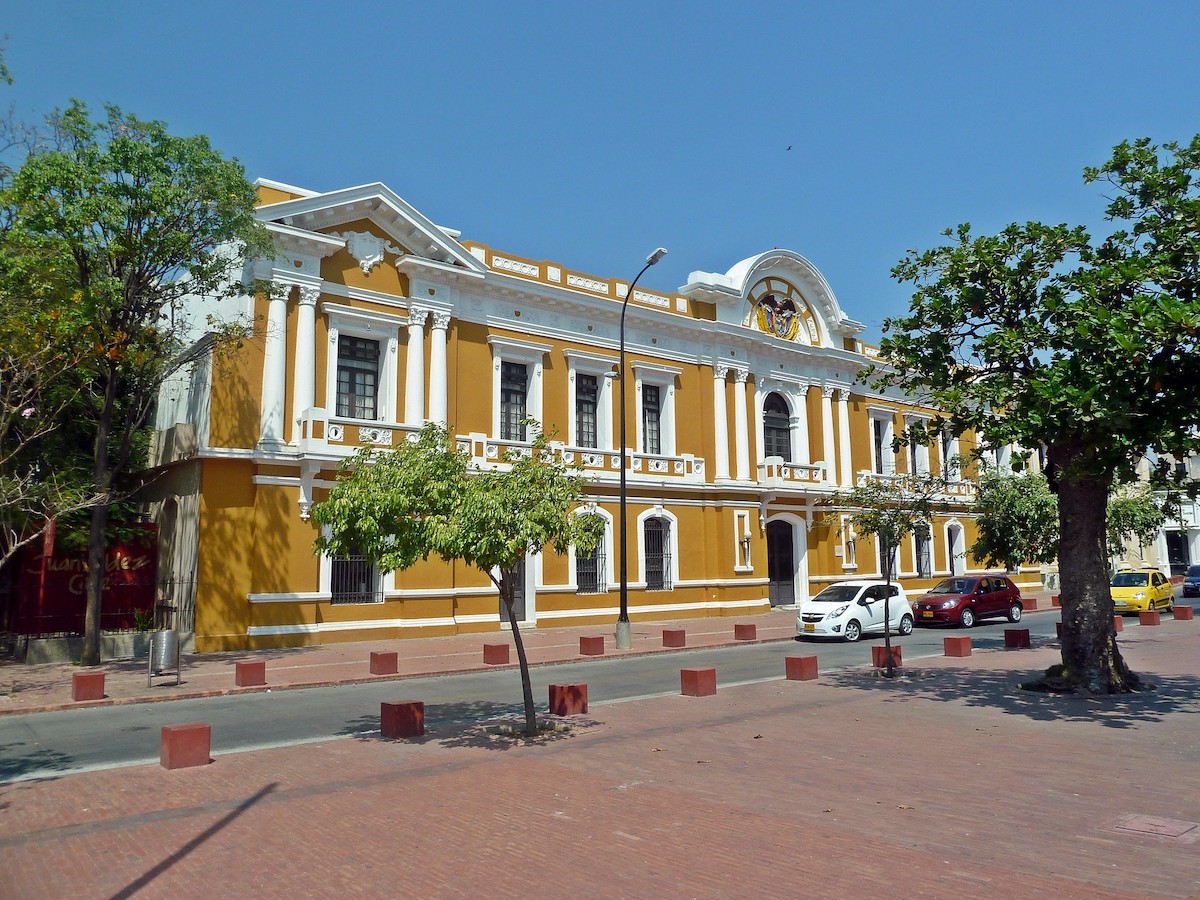
The very heart of Santa Marta is its historical centre, located in the centre of the city, just back from the shoreline; the Santa Marta Historical Centre is a must-see district of the city.
Alongside its buildings, the historical centre is the beating heart of the city; a mixture of bars, restaurants, and accommodation means that the Santa Marta Historical Centre is a buzz of activity both night and day, which is situated by Parque De Los Novios – a gentle reminder to consider staying away from this area after 9 pm.
Relax in the central square during the high heat of the day, a great place for people to watch and observe the natural rhythm of the city go by.
Know before you go:
- Location – Santa Marta city centre.
- Cost – Free!
- Opening hours – 24 hours.
- Time needed – You could spend hours getting lost in the historical centre, but one will do if you’re in a rush.
- Getting there – On your own two feet!
25. Quiet Contemplation in the Catedral Basilica of Santa Marta
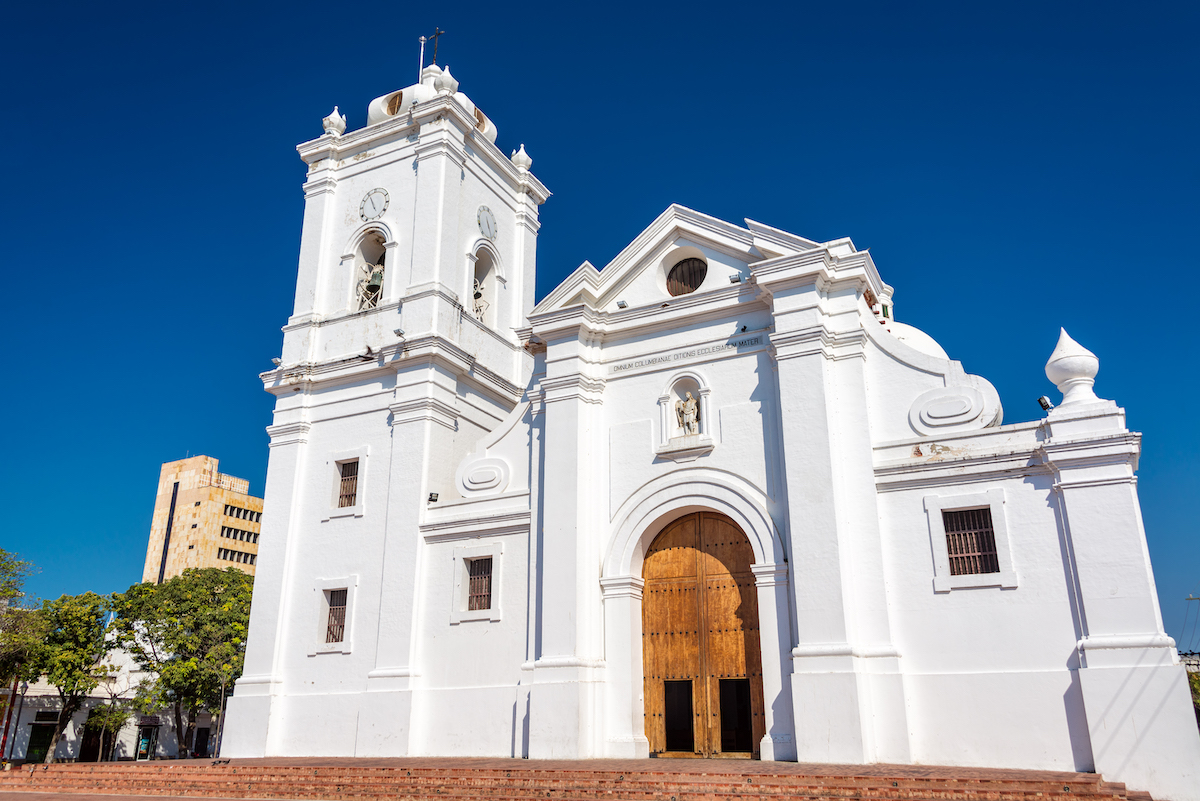
To get true peace and quiet in the city, there is no better place than the Basilica Cathedral of Santa Marta. Considered to be the mother church of all of Colombia, the Cathedral Basilica of Santa Marta is one of the oldest churches in all of South America.
Its outline can be seen across the city and has become one of the defining images of Santa Marta.
The church’s foundations were constructed in the 1530s, with restoration and improvements being carried out for centuries. Escape the heat of the day and spend some time quietly reflecting in the Catedral Basilica of Santa Marta’s high-arched nave – the ideal place for a little mental unwinding
Know before you go:
- Location – In the historical centre of Santa Marta, Carrera 4.
- Cost – Free to enter.
- Opening hours – Open from 8 am.
- Time needed – An hour or so will suffice.
- Getting there – An easy one to walk to from any central accommodation in Santa Marta.
I think I’ve stated the case here for my former home. There are certainly enough fun things to do in Santa Marta, Colombia including day trips from the city, and places to visit around the area.

